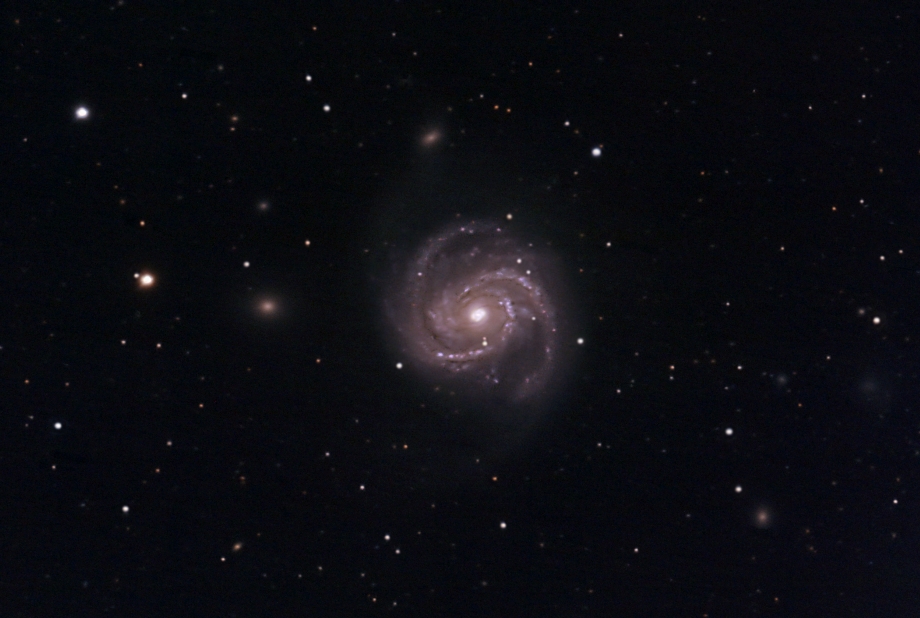 |
M100 - Spiral Galaxy in Coma Berinces
 |
Copyright 2006 Hap Griffin
M100 is a spectacular example of what is know as a "Grand Design Spiral Galaxy". It is a member of the relatively nearby Virgo cluster of galaxies and is one of the brightest face-on spirals visible to us, evidenced by the fact that it was one of the earliest of its class first cataloged in 1781. There are approximately 2500 galaxies in the Virgo cluster and it along with our local group of galaxies make up what is known as the Virgo Supercluster. M100 has special significance in modern cosmology in that it contains a number of variable brightness stars called Cepheid Variables. These giant stars vary in brightness over a period of 1 to 100 days and provide a "standard candle" of brightness reference since their absolute brightness is closely related to their variability period, and can thus be used to very accurately determine the distance to galaxies that contain them. In 1994, the Hubble Space Telescope was used to study the Cepheid's in M100 and determine very accurately that it's distance is 56 million light years. This value was used to refine the value of Hubble's Constant which is used to determine the age of the Universe based on its expansion rate.
In this photograph are also a number of other, smaller galaxies. Just above M100 is NGC 4322, a "nucleated dwarf elliptical". At the 9 o'clock position to M100 is NGC 4328. Between them at the 10 o'clock position is lenticular galaxy VCC636. At the 3:30 position nearly at the right edge of the photograph is the faint irregular galaxy MCG3-32-11. At the lower right is the lenticular galaxy IC783A.
There is a bright active supernova visible near the bottom of M100, just discovered three weeks prior to this photograph being taken. Below the bright core of the galaxy, two stars can be seen. The dimmer of the two is a local star in our own galaxy that is simply in line with the distant galaxy. The brighter of the pair is an individual exploding star within M100. The animated photo below shows M100 before and after the supernova event.

Date/Location:
March 3, 2006 Griffin/Hunter
Observatory Bethune, SC
Instrument: Canon 350D (modified IR filtering) Digital SLR through
10" Meade RCX400
Focal Ratio: F8
Guiding: Auto via SBIG ST237 through Orion ED80 refractor
Conditions: Visually clear, breezy
Weather: 32 F
Exposure: 180 minutes total (36 x 5 minutes @ ISO 800)
Filters: Baader UV/IR block
Processing: Focused and captured with DSLRFocus.
RAW to TIFF conversion, auto-dark and flat frame calibration, Digital Development,
Richardson-Lucy deconvolution, resizing and JPEG conversion in ImagesPlus. Color correction in Photoshop
6. Noise reduction in Neat Image.